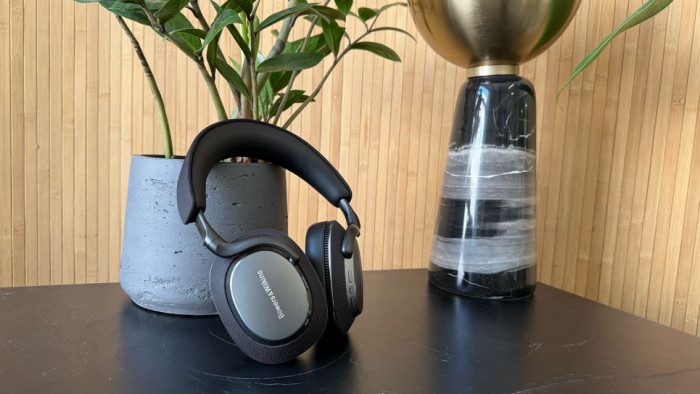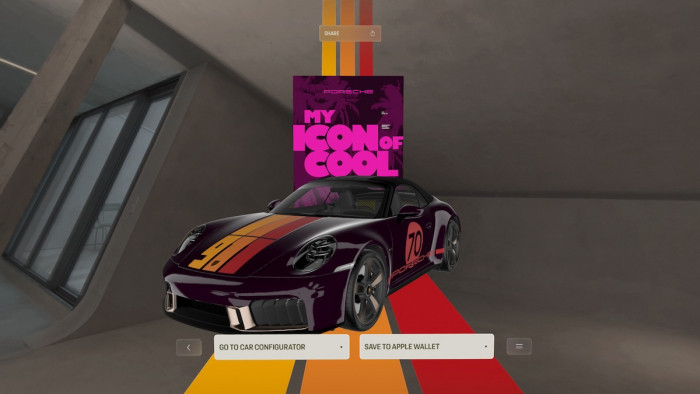"It's about taste; about the human in a digital world": How luxury became normal
The L-word is changing into something far more attainable and pleasant


“I’m not saying this is going to be the best shop in the world, but it won’t be far off,” says George Graham, chief executive and co-founder of Wolf & Badger. Graham and cofounder/elder brother Henry are in hard hats and hi-vis jackets, leading me on a tour of the soon-to-be-opened Wolf & Badger flagship store in Coal Drops Yard, King’s Cross. “This atrium is going to be the events area,” says Henry, making his way across the ground floor, bustling with carpenters and construction workers. “Through there we’ll have Raw Press, our cold-pressed juice concession. That way will be a florist, offering hand-tied bouquets, plants, various interactive classes – all sorts of fun things like that. This will be a ‘build your own bike’ store, by Freddie Grubb. At the front we’re stocking an American brand called The Vintage Twin – it has a couple of stores in New York, but we’re its first international presence. And then upstairs…”
The site of a former coal shed (and latterly, of legendary nightclub Bagley’s), the space is 12,000 square feet, set over three floors. It’s far and away the most ambitious project the brothers have attempted; in total, the store will comprise 10 concessions, 150 brands, a café, a restaurant and bar, a photo studio and the company office. “This will be the beauty zone, for ethical, independent beauty brands,” Henry continues. “Then we’ll have Albam, the menswear concession. Stationery from Papersmiths. A rug store selling vintage, tribal rugs. Kitchenware. Homeware. A book and magazine store. A bunch of midcentury modern antiques. I mean, it’s going to be really good…”

Wolf & Badger stocks ‘independent, ethical and unique designers’
Change is afoot in the world of shops. Ten years ago, UK internet sales made up less than 5 per cent of retail purchases. In 2018, the figure is approaching 20 per cent, and is predicted to reach 30-40 per cent in the next 15 years. Traditional chains are struggling to compete with the limitless scale and scope of Amazon Prime’s stock. Jostling, crowded shopping centres don’t stack up well against the frictionless convenience of lying in bed, hungover, and 1-Click ordering a litre of Lucozade Orange, a Bisto shepherd’s pie and a multipack of boxer shorts, all delivered within the hour (to use a completely arbitrary, fictional example). The way we buy stuff is changing. Accordingly, the way stuff is being sold to us is changing, too. In order for shops to remain relevant, the act of visiting them needs to become an inherently enjoyable experience. The future of retail is in luxury – but of a new type.
Wolf & Badger, with its tagline of ‘Shop independent, ethical and unique designers’, is representative of the rise of the new luxury standard in retail: shops that emphasise idiosyncratic products and high-quality materials over blockbuster megabrands. Places that feel welcoming and relaxed rather than exclusive and clubby. In 2018, ‘luxury’ is no longer synonymous with the glossy, foreboding shops of Knightsbridge or the establishment-traditionalism of Savile Row. It might equally be associated with modern, minimalist boutiques such as END Clothing and Oi Polloi, high-quality ‘monobrands’ such as Orlebar Brown (swim shorts) and Hamilton and Hare (underwear), or restaurants offering a particular specialism, such as Flat Iron (great steaks at low prices) and Koya (world-class udon noodles). It suggests a world of intelligent customers who don’t blindly pledge fealty to a few global brands, but develop more personal attachments to a range of smaller designers.
“We need stores where people’s senses are enlivened. Where they go away having had an enriching time”
“The democratisation of luxury is a huge trend, not just in Britain but globally,” says Helen Brocklebank, CEO of Walpole, the official trade body of Britain’s luxury sector. “And I think it’s an important thing: luxury shouldn’t be the preserve of some oligarch.” While the sector is worth a great deal to the nation’s economy (£32.2bn, and 2.2 per cent of GDP), Brocklebank is insistent that new luxury isn’t just about money. “It’s not about something being expensive,” she says. “It’s about taste. It’s about someone having gone on a quest to make a product that is beautiful and good.”
That ‘someone’ is generally an entrepreneur driven by a heartfelt passion for their chosen field. Tom Broughton, founder of glasses manufacturer Cubitts, which also has a store in Coal Drops Yard, speaks with delight about developments in eyewear and hosts regular spectacle-making workshops at his shops. (“The last one was supposed to last two hours,” he beams, “but it lasted about seven, and we all got p*ssed.”)

Japanese ‘curated’ store Cibone
The trend for niche shops and brands, lovingly curated with an emphasis on authenticity and good design, may be relatively new to the UK, but it’s been part of Japanese retail culture for some time. Cibone sells beautiful homeware and furniture, but also offers a tightly edited range of clothing, and hosts events and pop-ups. Hender Scheme operates a cult footwear label known for recreating classic designs in premium leather, but also produces a range of other products including leather accessories, games (made of leather) and diffuser sprays (leather-scented, inevitably). D&Department operates a café and exhibition space, sells books, CDs and both new and used furniture, and also publishes a dense, diligently researched travel magazine espousing the philosophy of “design perspective” (a devotion to long-lasting, universal products) and highlighting the crafts of each of Japan’s prefectures.
The British high street, comparatively, is going through a challenging time. But Jamie Whitfield, director at NewRiver (a real estate company that owns 34 shopping centres and 18 retail parks), sees a bright future for bricks and mortar shopping. Firstly, online sales are forecast to plateau – eventually. “At around 40 per cent it will reach a saturation point,” says Whitfield. Secondly, there’s the innate desire for human interaction: “The actual act of going into a store and buying something is far greater, in terms of endorphins running through your body, than the postman dropping something off.”

Cult leather label Hender Scheme
Whitfield is also enthusiastic about the location of British shopping centres; unlike in the US, where vast suburban shopping malls are built out of town, the British shopping centre is generally located centrally; a natural heart and hub of the community. It just needs to evolve. “What’s needed are stores where people’s senses are enlivened,” says Whitfield. “Where they go away having had an enriching experience; where they almost start to feel passionate about what they’ve just done.“
The Graham brothers agree. “At the end of the day, you can buy anything online these days and it’ll turn up at your house the next day,” says Henry. “And that includes things from our website. But for us, a store is as much about creating that energy, that excitement, those social experiences you can’t get online, as it is about bringing you brands you can’t find everywhere.”
Helen Brocklebank concurs; “Luxury now is about the human in a digital world. About creating those spaces where people can connect.”

Maximalist British brand House of Hackney
So where does luxury go from here? Walpole’s ‘brands of tomorrow’ programme is designed to support emerging British companies. In the past, these have included pioneering maximalist interiors label House of Hackney, English sparkling winemakers Nyetimber (global warming means the terroir of its vineyards now matches that of champagne, so cheers to that) and Wolf & Badger. “The scheme has helped nurture 96 new British brands over the past 11 years,” says Brocklebank, “and 84 of them are still in business, which is rather cheering given that, nationally, three out of five new brands go bust.”
Jamie Whitfield, his eye on the high street, suspects that ‘shopping centres’ will eventually acquire both a new name and a redefined sense of purpose. “Interactive spaces, engaging environments; it will become not just a retail experience, but a leisure experience.”
As online shopping grows ever more slick, convenient and intuitive, it’s possible that physical shopping will become even more rarified, experiential and heavily curated – in which case Blue Mountain School, on the corner of Redchurch Street, is a glimpse into the future. Created by James Brown and Christie Fels, the team behind Hostem (itself an audaciously self-assured concept store), Blue Mountain School offers a series of interactive spaces that feel somewhere between a museum and a private residence. Across the six storeys of the townhouse there are currently: ceramics from American designers BDDW, sculptural exhibits from German designer Valentin Loellmann; Perfumer H, a perfume atelier by Lyn Harris; a ’Hostem archive’ of clothing by favoured designers (displayed in a double-height basement, on giant moving Vitsoe shelves and hangers); and Mãos, a communal dining experience overseen by Nuno Mendes. It’s… well, it’s… an art gallery- cum-museum-cum-dining room?
“It could best be described as an interdisciplinary space dedicated to nurturing dialogue between different practices,” says Christie Fels, artistic director. But, she points out, “Blue Mountain School is best experienced in person,” which is, of course, the point.
“The actual act of going into a store and buying something is far greater, in terms of endorphins running through your body, than the postman dropping something off”
Back in Coal Drops Yard, Wolf & Badger prepares for its first day of business. The shop forms part of an ambitious new development (with a new postcode – N1C) in a reimagined King’s Cross, and joins neighbours including lighting designer Tom Dixon, ethical menswear label Form&Thread and French interior designers Caravane.
At 10am, Wolf & Badger opens its doors, and a queue of waiting customers streams in. The space is completely transformed. What was a building site 48 hours previously is now bright, airy, inviting and spotlessly clean. The florist has come to life, with a lush array of foliage and roses arranged in glass vases on a reclaimed 19th-century carpenter’s bench. The Raw Press bar is doing a brisk trade in fresh juices. At the Freddie Grubb concession, a group of men aged between 20 and 70 animatedly discuss bicycles. Upstairs in the magazine and bookshop, customers relax and chat, sitting on the modular leather sofa. The lighting is favourable. The music is the right volume. The staff are friendly, approachable and knowledgable. It’s a bustling, thriving shop.
The Graham brothers are delighted. Henry roams the store, covertly polishing minute blemishes on windows and inspecting the soil of the store’s pot plants for extraneous fallen leaves. George, bleary-eyed and gripping a coffee, grins. “I feel great. I haven’t slept for a week, and I’m probably not going to sleep until after Christmas. But it’s so, so exciting. We’ve opened. And people are here! Experiencing experiences!”
(Artwork: Ben Fearnley, Photography: Sun Lee)








